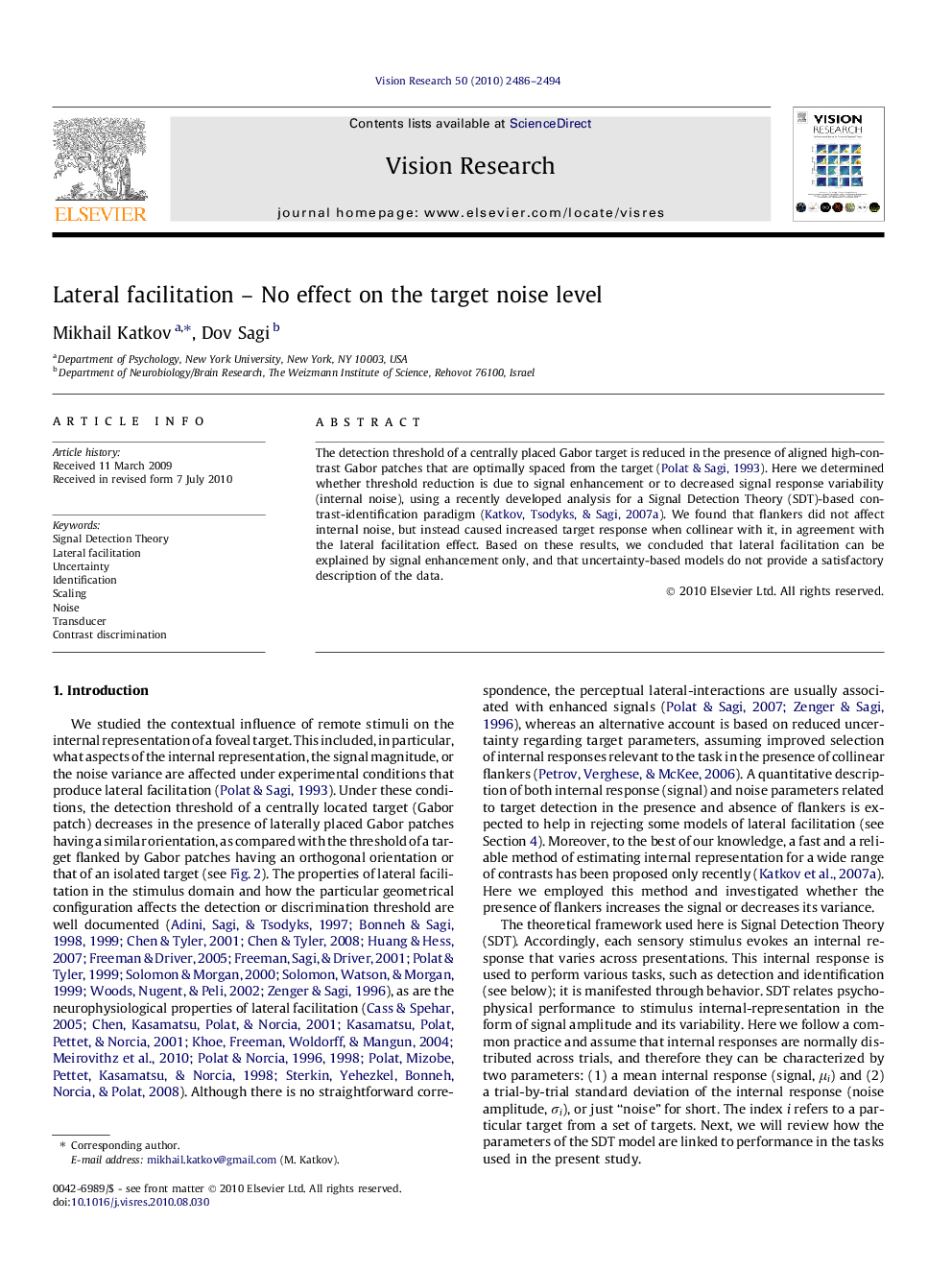| Article ID | Journal | Published Year | Pages | File Type |
|---|---|---|---|---|
| 6203815 | Vision Research | 2010 | 9 Pages |
The detection threshold of a centrally placed Gabor target is reduced in the presence of aligned high-contrast Gabor patches that are optimally spaced from the target (Polat & Sagi, 1993). Here we determined whether threshold reduction is due to signal enhancement or to decreased signal response variability (internal noise), using a recently developed analysis for a Signal Detection Theory (SDT)-based contrast-identification paradigm (Katkov, Tsodyks, & Sagi, 2007a). We found that flankers did not affect internal noise, but instead caused increased target response when collinear with it, in agreement with the lateral facilitation effect. Based on these results, we concluded that lateral facilitation can be explained by signal enhancement only, and that uncertainty-based models do not provide a satisfactory description of the data.
Research highlights⺠The contrast identification method is used to measure internal response and noise. ⺠Lateral facilitation effects are explained by signal enhancement only. ⺠Target response variability (noise) is equal for collinear and orthogonal flankers. ⺠Collinear facilitation is not explained by uncertainty reduction.
